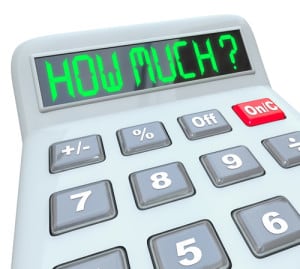
Utilities are embracing real-time pricing, but this area still needs refinement, as results have been less than encouraging.
Earlier in my career, I was involved with a consulting firm that counted North America’s largest electric utilities as clients. One of the industry’s most pronounced initiatives was “demand-side management,” which sought to encourage and provide incentives for conservation, with the understanding that spending a million dollars spent on energy-efficiency rebates was much cheaper than building a $500-million power plant.
With the advent of the smart grid, with the possibilities of sensing and tamping down demand as it occurs in real-time, demand-side management took on a whole new dimension. A piece of this opportunity, one that utilities are embracing, is real-time pricing, which applies market signals to regulate demand. However, this is an area that still needs refinement, as results have been less than encouraging, a new study cautions.
The problem is that consumers eventually become bored by the constant data readouts. In it, there’s a lesson for a wide range of real-time pricing considerations – consumers need to be engaged with such efforts on a higher level than simply throwing data at them on a regular basis.
Customer trends and real-time pricing
“We do know that customers consistently change behavior when they receive clear communications about when their rates vary, including incentives like ‘free night and weekends,’ which take advantage of lower-cost energy sources like surplus wind power at night,” says Gregory L. Craig, a 25-year energy industry veteran and the founder and CEO of Griddy, a next-generation energy company in a recent post.
[ Related: AI and Real-Time Data Deliver Big Hit for Music Steaming Service ]
However, Craig adds, communication of these benefits often gets lost, or is nonexistent. “A major challenge is that consumers usually have no idea when they’re using energy at peak hours versus hours when the wholesale cost is lower,” he says. “Most utilities provide simple pricing that’s either fixed or set to a fixed schedule based on the time of day energy is used. These retail pricing models do not necessarily correlate to the variable wholesale energy rate that governs supply and demand on the generation side.”
The result is “retail electricity prices don’t reflect actual costs or the interplay of supply and demand,” Craig continues. “It’s like charging people for groceries based on the time they visit the store rather than the actual cost of the products they buy.”
The effects of real-time pricing
A recent study also warns that the beneficial bump received when real-time pricing is instituted doesn’t necessarily translate into long-term gains for utilities. The study, conducted by Shirley Pon, quantitative analyst with MNR Group, looked at the impact of real-time pricing on electricity usage across Irish households. Time-of-use pricing with real-time usage reduces use up to 8.7 percent during peak times, but the effect is gone after three months, she finds.
[ Related: Is Real-Time Data Delivery Really That Important? ]
The challenge, she says, is that in-home displays installed in the households, while providing an adequate data picture on electricity costs based on time-of-day usage, tend to get ignored after a period of time – they “blend into the background.”
Powering real-time energy reporting
Pon advises that utilities increase billing reports to the monthly level or provide a web application providing real-time information. The key is to “maintain the strength of the effects is to increase the frequency of bills for households with In-home devices. Households are reminded more frequently through the ‘shock’ of receiving their bill to reduce their consumption. Additionally, to prevent in-home devices from falling into
the ‘background’ of household routines, utilities can change time-of-use rates on a quarterly basis and allow households to adjust their consumption with a more flexible pricing structure to reflect the cost of electricity generation and demand for different seasons.”





























